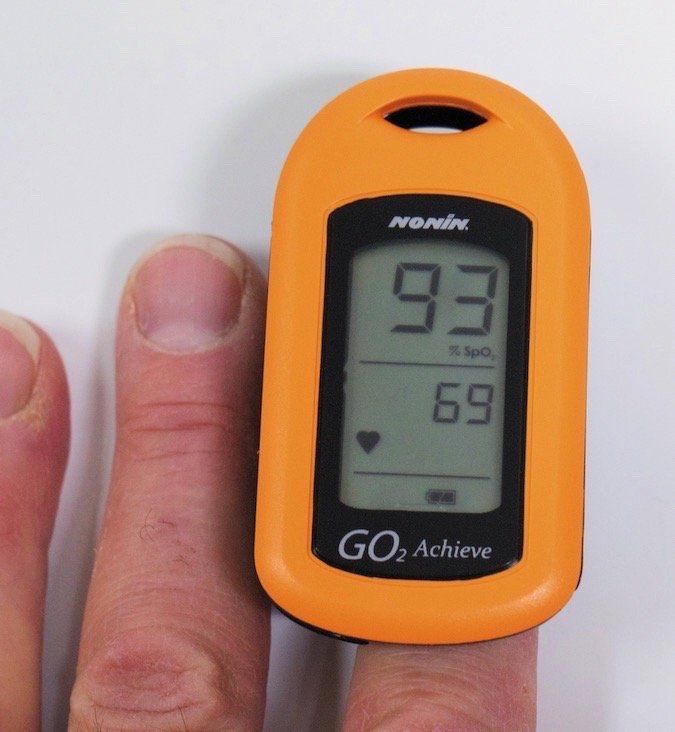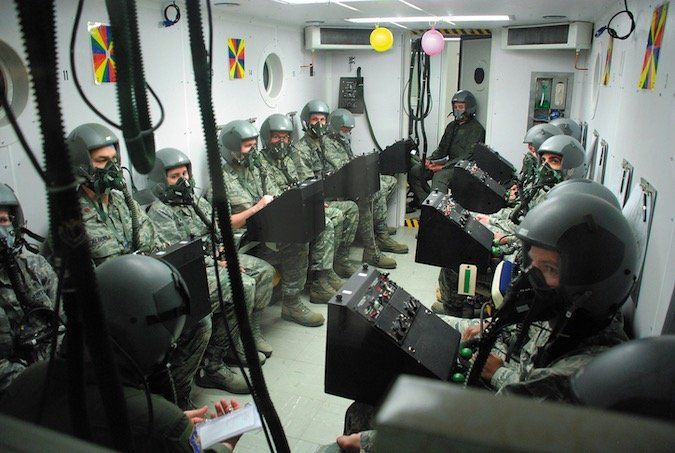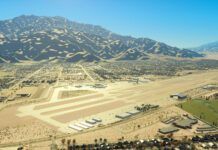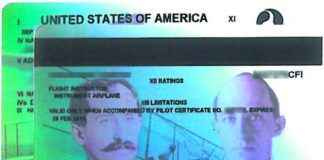Ever wonder how the FAA came up with 91.211 requiring oxygen use above 12,500 feet MSL for more than 30 minutes and any time over 14,000 feet MSL? The answer is geography, not physiology. When these rules were written, oxygen systems were expensive and heavy. General aviation wanted to fly anywhere in the U.S. without oxygen, and you can fly any mountain pass in the 48 contiguous U.S. states in less than 30 minutes between 12,500 feet and 14,000 feet MSL.
Physiology Matters

The problem is that these rules ignore physiology and today’s availability of inexpensive, efficient oxygen devices.
When does a pilot need oxygen? That depends on many factors that include weight, age, tobacco use, previous toxic exposures, underlying lung disease, home elevation, and to some extent, heredity. Some pilots need oxygen as low as 6000 or 7000 feet MSL and others do fine at 15,000 feet. But then, what does “do fine” mean?
I suggest pilots perform a simple test. Fly at night at 6000-7000 feet for about 30 minutes. Then put on oxygen. It will look like someone turned up the lights on the ground and the panel. Color vision also improves dramatically. This occurs since the retina of our eyes is the most sensitive tissue in our body to low oxygen levels. However, the brain is also sensitive and will have diminished function with less oxygen being supplied to it. The brain has more reserves, but those reserves are highly variable depending on the factors I mentioned above.
How Our Bodies Work
Here is a bit of anatomy and physiology. The lungs are like thousands of microscopic balloons, all attached together. As we inhale and exhale, these balloons inflate and deflate. Just outside the wall of these balloons are blood vessels. Oxygen perfuses across the cell wall of the balloon (lung tissue), is absorbed by hemoglobin in red blood cells, and then is carried to tissue in the body by the circulatory system.
Ventilation is the movement of air in and out of those little balloons in the lung. Perfusion is the transport of oxygen across the lung tissue into the blood stream. The difference is significant. If a pilot has a large belly, they might not ventilate very well when sitting due to the mechanics of moving the extra bulk. Perfusion could be affected by a cold or allergies that increase the amount of mucus in the lung (e.g. filling some of those balloons), which might decrease absorption through the cell walls.
Oxygen makes up about 20 percent of the air we breathe, with nitrogen making up most of the rest. This ratio does not change much with altitude but the amount of air in each breath does. The oxygen and nitrogen particles are not as close together as we gain altitude so the absolute amount of oxygen inhaled deceases.
When To Use Oxygen
When do we need oxygen? First, you can’t have too much oxygen (oxygen toxicity only occurs in special circumstances and isn’t an issue in GA) so being liberal with its use is never a problem.
Some people need oxygen at 6000 feet MSL and some don’t need it until much higher. How do you know? Since one of the first signs of hypoxia (low oxygen) is euphoria, how you feel isn’t the best way to determine need. Also important is that the specific condition of the pilot may change from day to day. (A bit congested today?)
The best way to determine oxygen needs is with a pulse oximeter. A fingertip pulse oximeter shines two red beams through a fingernail and determines oxygen content by the redness of the blood. This works because hemoglobin increases its “redness” with increasing oxygen content. (Carbon monoxide fools pulse oximeters. More on that later.)
When Mike Busch (AVweb co-founder) and I introduced pulse oximetry to general aviation in 1994, I recommended pilots take their oxygen saturation at their home airport before take off. When oxygen saturation drops five points below that baseline, they should use oxygen. If it drops 10 points, the pilot must use oxygen.
This accommodates pilots who live in mountainous regions since they have adapted to higher altitudes. Pilots living at 6000 feet MSL will have blood counts about five percent higher than those living at sea level—literally thicker blood. Flying at high altitudes does not increase blood counts since it takes about three months of continuous altitude exposure for the body to make this adaptation.

How Much To Use
When using oxygen, flow rates should be adjusted to bring the saturation back to the pilot’s home-field saturation to avoid wasting oxygen, not because oxygen is expensive, but because it increases tank duration. Higher flows won’t make a meaningful difference. It might give a placebo effect like the football players on the sidelines, but does little physiologically. It certainly isn’t harmful, though, other than shortening system duration.
If the aircraft has a built-in system with no flow valves, the oxygen flow rate will be based on rather arbitrary FAA recommendations for one liter per minute (lpm) per 10,000 feet of altitude at the aircraft’s certified ceiling. Thus, if your aircraft is certified for 25,000 feet MSL, the built-in system will flow at 2.5 lpm even if you are only at 10,000 MSL, although some aircraft have barometric compensating valves.
That high rate just wastes oxygen and flow valves should be used as an inexpensive way to extend system duration. The converse is also true. Some pilots—particularly smokers and those with lung problems—will need higher flow rates than one lpm/10,000 feet MSL even at lower altitudes. Airplanes are not the ideal setting to test coronary arteries or pulmonary efficiency.
Even if a pilot does not “need” oxygen, its use can reduce overall fatigue. Plus, if you know there’s an instrument approach coming, breathing oxygen for 15 minutes before and during descent can make that approach and landing better. Got a passenger who is feeling a little air sick? Put them on oxygen and symptoms will likely improve.
Delivery
What about getting the oxygen from that tank to your lungs? The FAA says the pilot can use a mask or a cannula to 18,000 feet MSL and only a mask above 18,000 feet. The idea is that the amount of flow through a cannula that can be efficiently inhaled is insufficient above 18,000 feet, thus the mask requirement. However, with pulse oximeters, the type of mask or cannula as well as flow rate can be scientifically determined.
I don’t like masks because of drinking and eating. If a pilot takes off the mask to drink or eat, hypoxia will set in quickly enough that the pilot might forget to put the mask back on. At a minimum, if a pilot wearing a mask needs to eat or drink, they should put on a cannula or have a copilot or passenger supervise, making sure only one is off the mask at a time. Since there are no FAA inspectors in the flight levels, I recommend a cannula as long as oxygen saturation can be maintained.
There are two types of cannula—standard and Oxymizer. The standard cannula is just that—tubes that go straight from the tank to the nose wasting oxygen during exhalation and the pause portions of the respiratory cycle. An Oxymizer cannula has a reservoir bag that stores oxygen during the non-inhalation periods. This allows for a lower flow rate that extends tank duration while still maintaining oxygen saturation. There are no Oxymizer masks because they require a slight negative pressure that the mask can’t create.
There are also mechanical and electronic oxygen flow-conserving devices. These can prolong tank durations but tend to be expensive and not that much more effective than the Oxymizer cannula. If you use a pulse oximeter to assure efficient and proper oxygen saturation, I don’t see the value in these flow-conserving devices.
Types of Oxygen
Oxygen is oxygen is oxygen. There is no difference between aviators’ breathing oxygen, which is what you will get at your local FBO for an exorbitant price, and the inexpensive oxygen you get from a medical supply or welding gas shop. It all comes from the same liquid oxygen source, which essentially is as pure as anyone could need. The only purer oxygen is a type used for laboratory or specialty welding purposes.
“Aviator oxygen” came from an ancient FAA rule when medical oxygen was humidified in the tank. The concern was that moisture in aircraft oxygen lines could freeze and block the flow of oxygen. But medical oxygen has not had moisture added in tanks for over 50 years, instead adding it at the point of dispensing. But, the FAA still requires testing aviator oxygen for moisture even though there hasn’t been a positive test this century.
If you have a built-in system, by FAA rules, it must be filled by an A&P with aviator oxygen. Many pilots ignore these regulations and fill their own aircraft from a couple of oxygen cylinders and a set of inexpensive connection lines. If you have a portable system, you can fill your tanks at a medical oxygen or welding gas supplier.
Believe it or not, medical oxygen is still a prescription drug, so some medical suppliers want a prescription. However, most physicians, myself included, willingly write those prescriptions for pilots.
Just like there’s no meaningful difference in oxygen sources, there are no significant differences between a medical oxygen tank system and an aviation system except the medical system will be a lot less expensive.
One entrepreneur has tried converting medical portable oxygen concentrators (POCs) for use in aircraft, eliminating the tank. Although expensive and requiring one unit for each user, the big advantage is an unlimited source of oxygen as long as there is electricity. However, POCs use a compressor to force ambient air though a nitrogen absorbing sieve and become less effective with altitude due to the decreased partial pressure of oxygen. Thus, the higher the altitude, the lower the concentration of oxygen delivered. Concentrators also can overheat if not given space for ventilation and can only be used with a cannula.
Know What To Do
Altitude training should be required for anyone flying in the flight levels but I recommend it for all pilots. Knowing how you react to hypoxia is both enlightening and disconcerting.
There are two types of training. The best is a true altitude chamber that takes the trainees to altitude by simulating a sudden decompression. The second, which is less expensive and more available, is a dilution “chamber” where there’s no pressure change but the air in a sealed room, vinyl tent, or tight-fitting mask, simulates altitude by increasing the nitrogen to oxygen ratio. In both, pilots are generally recorded performing simple tasks like math problems.
Trainees are always amazed by how impaired they are on camera since they thought they performed well. This illustrates the seriousness of hypoxia if the NTSB accident reports aren’t enough.
Carbon monoxide detection is important in any aircraft. CO can “fool” a pulse oximeter since it causes hemoglobin to turn even redder than oxygen. CO has eight times more affinity for hemoglobin than oxygen and the combination of CO and altitude-induced hypoxia has a synergistic adverse effect on its victims.
My personal rule is that if I even think I might need oxygen, I use it even if the pulse oximeter says I am OK. It is probably the only time some of my pilot friends agree with me being liberal.
TIME OF USEFUL CONSCIOUSNESS AT ALTITUDE | ||
CABIN ALTITUDE | NORMAL CLIMB | RAPID DECOMPRESSION |
18,000 FEET | 20-30 MINUTES | 10-15 MINUTES |
22,000 FEET | 10 MINUTES | 5 MINUTES |
25,000 FEET | 3-5 MINUTES | 1.5-3.5 MINUTES |
28,000 FEET | 2.5-3 MINUTES | 1.25-1.4 MINUTES |
30,000 FEET | 1-2 MINUTES | 30-60 SECONDS |
35,000 FEET | 30-60 SECONDS | 15-30 SECONDS |
40,000 FEET | 15-20 SECONDS | 7-10 SECONDS |
43,000 FEET | 9-12 SECONDS | 5 SECONDS |
50,000 FEET | 9-12 SECONDS | 5 SECONDS |

What About Pressurization?
Pressurized aircraft have built-in oxygen systems in case of sudden decompression. Next time you’re in a pressured aircraft, look for the oxygen mask. You might find it behind the seat, in a pouch somewhere, or in the baggage compartment. Check the oxygen level in the tank. It’s likely low, having last been filled at annual and leaking slightly since. To be an effective emergency oxygen system, a mask should be plugged in and usable in under 15 seconds. This is often not the case.
A sudden decompression event is generally loud, disconcerting, and dusty from dirt becoming airborne instantly. It reduces time of useful consciousness from a gradual climb to the same altitude. Proper recurrent training should practice emergency oxygen use and emergency descent, but not all do. (My last SIMCOM recurrent didn’t even mention it.) I carry a separate emergency oxygen bottle with a quick-donning mask located right in front of my seat because of the limitations of the built-in system.
Even when the pressurization system is functioning properly, flying an aircraft at cabin altitudes up to 10,000 feet can be fatiguing and can affect vision and cognitive abilities. Oxygen can still be useful. I heartily recommend oxygen for pilots in pressurized aircraft to make trips more comfortable and safer, particularly if they have any of the risk factors, even if just for the last 15 minutes of a long flight before an approach and landing. —BB
Dr. Brent Blue is an ATP-rated pilot flying a Cessna 340 and an amphibious T-185 from Driggs, ID (KDIJ) where every flight is a high-altitude flight. He has written and lectured on aeromedical issues—particularly hypoxia and carbon monoxide—for over 30 years. He can be reached at[email protected].





I’ve been searching high and low for the FAA requirement to use a mask above 18,000. I can’t find it. Can you help me do so?